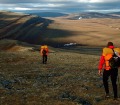Have you ever thought about buying barefoot shoes? Maybe you’re already deep into it and enjoying the feeling of freedom with every step. But be careful, even with these natural wonder shoes, there are some pitfalls that could slow you down. To ensure you really enjoy all the benefits of these shoes, let’s take a look at the most common mistakes many make – and most importantly, how to avoid them.
The biggest pitfalls when wearing barefoot shoes
Switching to barefoot shoes too quickly
One of the most common mistakes is switching to barefoot shoes too quickly. Sure, the excitement is high, but your feet need time to get used to this new way of walking. After all, you’ve been wearing cushioned shoes for years, which have pampered your feet more than strengthened them. So, take it slow – your feet will thank you.
The wrong shoe size
You might think you know your shoe size, but barefoot shoes are a different caliber. Here, every millimeter counts. Too tight? Ouch! Too loose? You’ll waddle like a duck. Your toes should have enough room to move freely, but not so much that you slip. So take your time when trying them on and choose wisely.
Incorrect walking technique
Walking in barefoot shoes requires a rethink. Many of us are used to landing on our heels first – which is fine in regular shoes. But in barefoot shoes, this can cause problems. The key here is to walk more on the midfoot and forefoot to avoid overloading. Imagine you’re sneaking like a cat – elegant and quiet.
Wanting to use barefoot shoes for everything
Barefoot shoes are great, but they’re not the best choice for every activity. Want to lift heavy weights or traverse extremely uneven terrain? Then another pair of shoes might be a better choice. Barefoot shoes are excellent for everyday wear, walks, and light training, but sometimes you have to compromise.
Neglecting foot care
Yes, barefoot shoes promote the natural movement of your feet, but that doesn’t mean you can neglect care. Blisters, dry skin, or calluses can occur if you don’t care for your feet regularly. A bit of foot cream and a good pedicure can work wonders here.
Ignoring the weather
Barefoot shoes and rainy weather? Not always the best combo. If it’s pouring outside or the temperatures are freezing, you should carefully consider whether your barefoot shoes are the right choice. There are models designed for such conditions, but the weather is still a factor you shouldn’t ignore. Especially in snow, the shallow tread depth can lead to dangerous slipping.
Not planning an adjustment period
Patience is a virtue, especially when it comes to barefoot shoes. Your feet need to adjust to the new freedom, and that can take time. Don’t stress if it feels unfamiliar at first. Give yourself and your feet the time they need.
Choosing unsuitable terrain
Not every terrain is ideal for barefoot shoes. Especially at the beginning, you should carefully consider where you wear them. Too rocky, too uneven – that can quickly become uncomfortable. Start with soft, level surfaces and gradually work your way up.
Neglecting posture
In barefoot shoes, your posture is crucial. Poor posture can quickly lead to pain in the back or joints. Imagine you’re a marionette, hanging from invisible strings – this helps you stand and walk straight and relaxed.
Ignoring pain
And perhaps the most important point: don’t ignore pain! Your body sends you signals when something is wrong. Listen to it and take a break if needed. There’s no point in pushing through the pain – that only leads to injuries and frustration.
How to avoid the most common mistakes
Get used to your barefoot shoes gradually
The key to success is patience. Gradually increase the wearing time and give your feet the time they need. You’ll notice how your muscles gradually adapt and become stronger.
Choose the right shoe size
Take your time finding the perfect size. Try on the shoes in the afternoon when your feet are a bit larger. Make sure your toes have room, but the shoe still fits snugly.
Learn the correct walking technique
Watch videos or read guides to learn the proper technique. Practice makes perfect, and soon you’ll naturally walk correctly.
Choose appropriate activities
Not every activity is suitable for barefoot shoes. Choose wisely and be prepared to switch to other shoes depending on the situation.
Take care of your feet regularly
Pamper your feet with regular care. Moisturizing, trimming nails, and removing calluses – all of this helps keep your feet healthy and happy.
Pay attention to the weather
Check the weather forecast and consider whether your barefoot shoes are really the best choice. There are weatherproof models, but sometimes it’s better to play it safe.
Be patient
Give yourself and your feet the time they need. Changes don’t happen overnight, and that’s okay.
Choose the right terrain
Start with simple surfaces and gradually work your way up to more challenging terrains. Your feet will thank you.
Pay attention to your posture
Always remember to stand and walk upright. This not only helps your feet but your entire body.
Listen to your body
If it hurts, take a break. Your body knows what’s good for you – trust it.
Conclusion
Barefoot shoes can give you an incredible feeling of freedom and connection with nature, but only if you use them correctly. Avoid the most common mistakes and give your feet the time they need. In the end, you’ll be rewarded with a stronger, healthier body.













